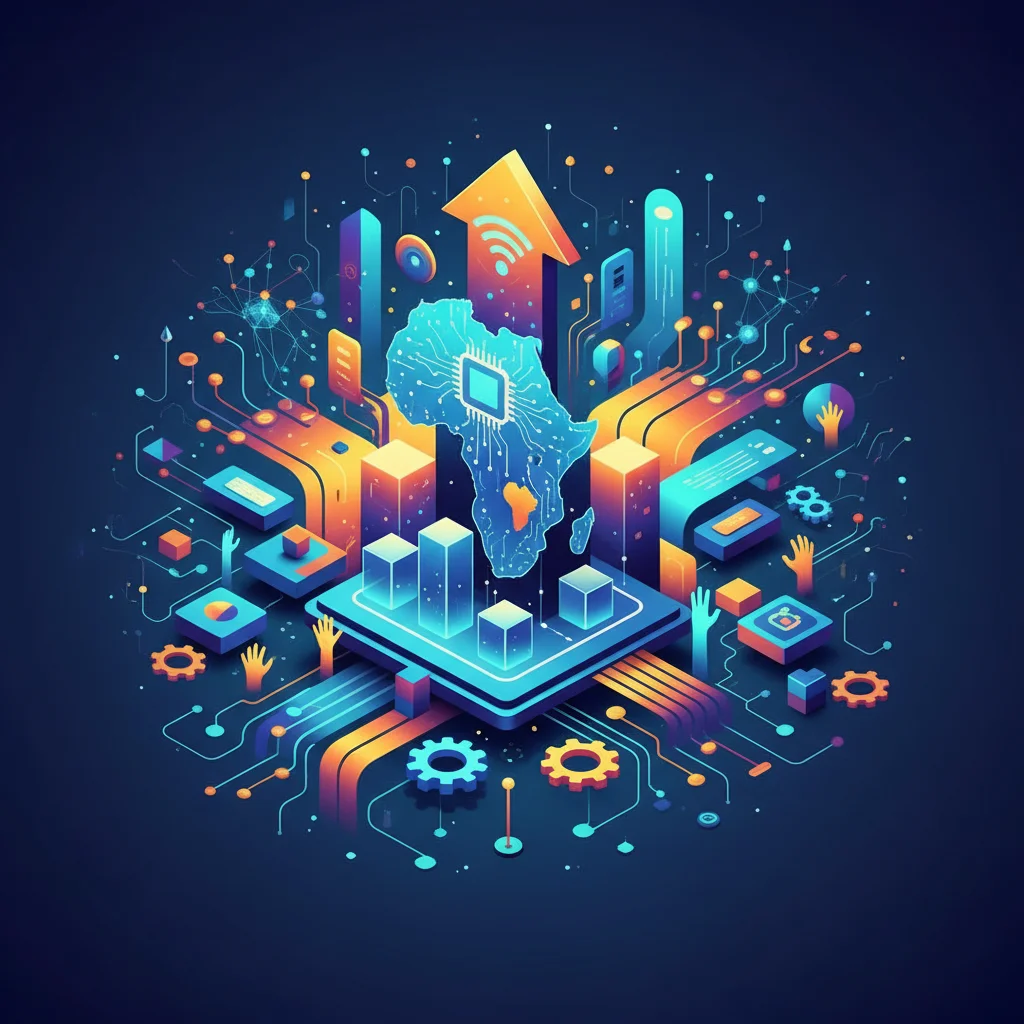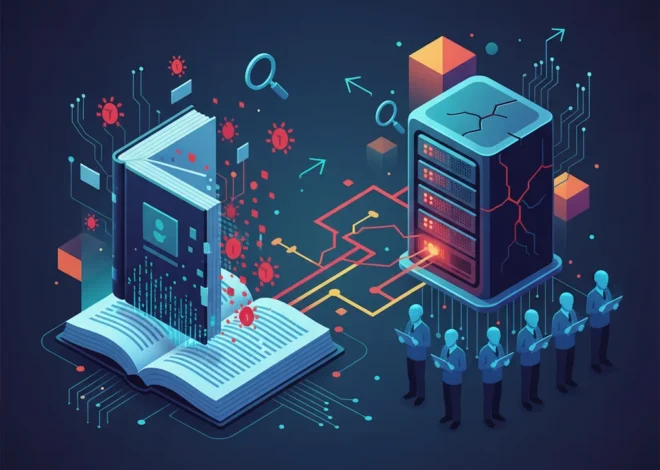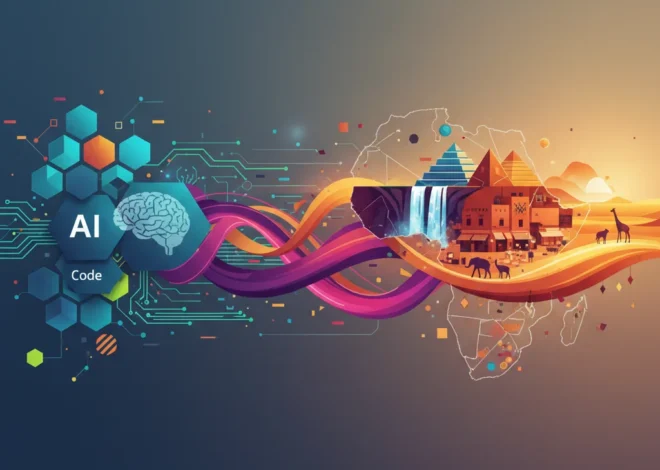
Building the Future: How One Ghanaian Startup is Forging Africa’s Next Generation of Tech Innovators
In the bustling global tech scene, we often look to Silicon Valley, Shenzhen, or Tel Aviv for the next big disruption. We talk about multi-billion dollar funding rounds, complex AI algorithms, and the relentless pace of software innovation. But what if the most profound revolution isn’t happening in a high-tech campus, but in a classroom in Accra, Ghana, with a simple box of wires, sensors, and a child’s imagination?
The global demand for tech talent is insatiable. Yet, a significant gap persists between the theoretical knowledge taught in many schools and the practical, hands-on skills required to build the future. This chasm is particularly pronounced in many parts of Africa, a continent with the youngest population in the world—a wellspring of untapped potential. Enter Stemaide, a Ghanaian startup founded by three visionary women who are not just building a company, but building a future.
Stemaide’s mission is elegantly simple yet audacious: to bring practical, engaging science and technology skills to young Africans, preparing them for the jobs of tomorrow. They’re doing it not with a complex SaaS platform alone, but with something you can touch and feel: hands-on science kits. This is the story of how a personal frustration blossomed into a powerful catalyst for change, fueling the next wave of African innovation.
The Spark: From Theoretical Frustration to Tangible Creation
Every great startup begins with a problem. For Stemaide co-founder Maimuna Abdullahi, that problem was deeply personal. Growing up, she was fascinated by science, but her education was confined to textbooks and diagrams. The concepts felt abstract, disconnected from the real world. “I struggled in school because science was taught in a very abstract way,” she shared in a recent interview with the BBC. It’s a sentiment that resonates with millions of students globally who are taught the “what” but never get to experience the “how.”
This frustration became the seed of an idea. What if learning about circuits wasn’t just about drawing them, but about building them? What if understanding robotics wasn’t just about theory, but about making a machine move? Alongside her co-founders, Amal and Priscilla, Maimuna set out to create the tool she wished she had as a child. They founded Stemaide to design and distribute science and technology kits specifically for children aged six to sixteen.
These aren’t just toys. They are carefully curated educational experiences, complete with robotics components, electronics, and access to a digital platform with tutorials. This hybrid model brilliantly merges the tactile satisfaction of hardware with the scalability of software. It’s a modern approach to education, recognizing that true learning happens when theory and practice collide. By giving children the tools to build, experiment, and fail, Stemaide is teaching something far more valuable than scientific principles: they are teaching problem-solving, resilience, and the core tenets of programming logic.
Google's Nuclear Gambit: Why AI's Colossal Energy Appetite is Rebooting the Atomic Age
Deconstructing the Stemaide Method: A New Blueprint for STEM Education
Stemaide’s approach represents a fundamental shift from traditional, rote-based learning to an active, project-based model. It’s a transition from passive consumption of information to active creation of solutions. This methodology is critical for developing the kind of agile, inventive minds needed to excel in fields like artificial intelligence and automation, where there is no textbook for the next breakthrough.
To truly grasp the impact of their model, let’s compare the old way with the new.
| Learning Aspect | Traditional Classroom Approach | Stemaide’s Hands-On Approach |
|---|---|---|
| Learning Style | Passive (Listening, Memorizing) | Active (Building, Experimenting, Coding) |
| Core Tools | Textbooks, Chalkboards, Diagrams | Robotics Kits, Sensors, Digital Tutorials, Code Blocks |
| Key Outcome | Theoretical Knowledge, Exam Scores | Practical Skills, Problem-Solving, Creative Confidence |
| Concept of Failure | A negative result to be avoided | A necessary part of the iterative design process |
| Future Skill Alignment | Limited connection to modern tech jobs | Directly builds foundational skills for software development, engineering, and AI |
This shift is profound. By providing a tangible output for their learning, Stemaide helps children see the immediate results of their work. A correctly wired circuit lights up an LED. A well-written piece of code makes a robot follow a line. These small victories build a powerful sense of agency and prove to young learners—especially girls, who are often discouraged from pursuing STEM—that they are capable of building the technology that will shape their world.
Fueling Africa’s Tech Renaissance, One Kit at a Time
Stemaide isn’t operating in a vacuum. It is a vital part of the continent’s burgeoning tech explosion. Africa is home to a rapidly growing number of tech hubs, from Lagos to Nairobi, Cape Town to Accra. Venture capital funding is flowing in, and homegrown unicorns are emerging. However, for this growth to be sustainable, it needs a deep and wide talent pipeline.
This is where Stemaide’s work becomes critical on a macroeconomic scale. You cannot build advanced machine learning models without engineers who first understood basic logic gates. You can’t develop sophisticated SaaS platforms running on the cloud without developers who first learned the fundamentals of programming. Stemaide is planting the seeds that will, in a decade, grow into the forests of talent required to power this renaissance.
With a mission to reach as many children as possible, the company has already made a significant impact, having distributed its kits to over 1,000 children so far. This isn’t just a number; it represents a thousand potential futures altered, a thousand minds opened to the possibility of a career in technology. This grassroots effort is the essential groundwork for Africa to not just participate in the Fourth Industrial Revolution, but to lead parts of it. By equipping its youth with 21st-century skills, the continent can “leapfrog” legacy systems and pioneer new solutions in everything from fintech to agritech.
Digital Highways for Dirt Roads: How One Startup is Revolutionizing South Africa's Township Economy
The Hard Realities of Hardware: Overcoming the Startup Gauntlet
The journey for any startup is fraught with challenges, but for a hardware-focused company in an emerging market, the difficulty is magnified. Stemaide’s biggest hurdle, as highlighted in the BBC report, is the high cost of importing electronic components. This is a classic problem that plagues hardware innovators in many parts of the world: reliance on complex, expensive, and often fragile global supply chains.
This challenge forces a level of resourcefulness and strategic thinking that pure software startups may not face. The team at Stemaide is actively exploring local manufacturing options to mitigate these costs and build a more resilient operation. This move, while difficult, could unlock immense benefits:
- Cost Reduction: Lowering the price point of the kits, making them accessible to a much wider audience.
- Job Creation: Building a local manufacturing base creates skilled jobs and stimulates the local economy.
- Supply Chain Control: Reducing dependence on foreign suppliers and insulating the business from global shipping volatility.
Furthermore, as their digital platform grows, another critical consideration will emerge: cybersecurity. Protecting the data and privacy of the young users on their platform will be paramount. Building robust security protocols from the ground up is essential for establishing trust and ensuring the long-term viability of their digital ecosystem.
The Future is Hands-On: A Vision for a Continent of Creators
Stemaide’s vision extends far beyond selling science kits. As Maimuna Abdullahi powerfully stated, “We want to create a generation of innovators and problem-solvers.” This is the ultimate goal: to shift the mindset from consumption to creation.
Imagine the long-term impact. A child in a rural Ghanaian village who builds her first robot with a Stemaide kit today could be the engineer who develops drone-based crop monitoring systems for local farmers in fifteen years. A boy in Accra who learns to code with their platform could be the founder of the next great African fintech company, creating solutions for financial inclusion. This is the direct line that Stemaide is drawing from a box of parts to a future of boundless opportunity.
The journey from learning basic electronics to designing complex artificial intelligence systems is a long one, but it has to start somewhere. It starts with a spark of curiosity, fanned into a flame by the thrill of making something real. Stemaide provides both the spark and the fuel.
Innovation Under Fire: What the Crisis at the UK's Turing AI Institute Reveals About Tech Culture
The story of Stemaide is a powerful reminder that transformative innovation can come from anywhere. It’s a testament to the power of solving a problem you understand deeply and a blueprint for how to build a better future. As the world continues to digitize and automate, the most valuable resource will not be data or capital, but human ingenuity. And in classrooms and homes across Ghana and beyond, Stemaide is ensuring that the next generation of innovators is ready to build it.


